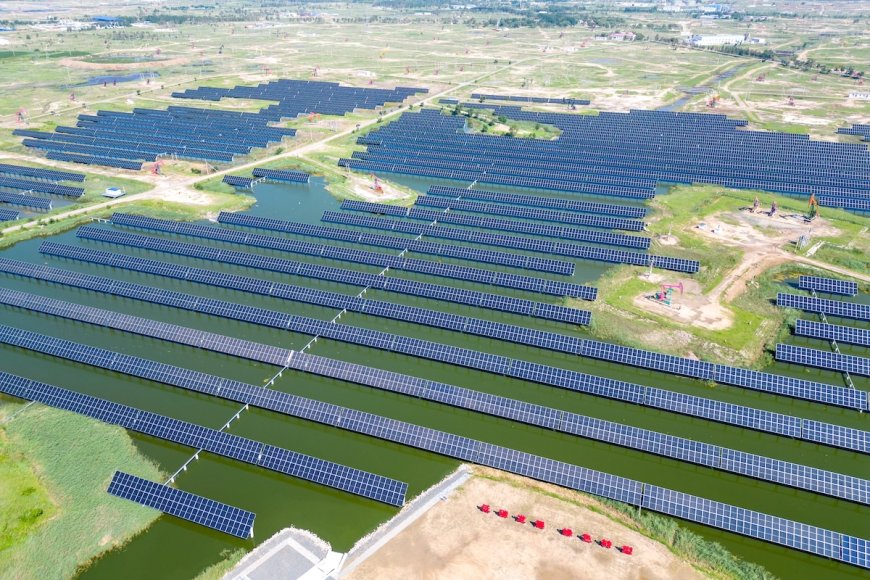China’s CO2 Emissions Fall for the First Time Despite Rising Power Demand, Signaling Possible Peak
For the first time, a surge in China’s renewable energy output has led to a drop in the country’s carbon emissions, despite rapidly increasing power demand. The emissions decline marks a major milestone in China’s energy transition, according to an analysis by Lauri Myllivirta, lead analyst and co-founder of the Center for Research on Energy […] The post China’s CO2 Emissions Fall for the First Time Despite Rising Power Demand, Signaling Possible Peak appeared first on EcoWatch.

For the first time, a surge in China’s renewable energy output has led to a drop in the country’s carbon emissions, despite rapidly increasing power demand.
The emissions decline marks a major milestone in China’s energy transition, according to an analysis by Lauri Myllivirta, lead analyst and co-founder of the Center for Research on Energy and Clean Air (CREA) in Finland, published by Carbon Brief.
“Growth in clean power generation has now overtaken the current and long-term average growth in electricity demand, pushing down fossil fuel use,” Myllyvirta wrote in the report. “The current drop is the first time that the main driver is growth in clean power generation.”
The report said China’s total power demand rose 2.5 percent in the first quarter of this year, while thermal power generation — mostly from coal and gas — fell by 4.7 percent.
China is the biggest emitter of greenhouse gases in the world, but has a goal of reaching peak emissions by 2030 and achieving carbon neutrality by 2060, reported the Bangkok Post.
The country has built nearly twice the solar and wind capacity as all other countries combined, according to research published in 2024.
Myllyvirta said China’s installation of new solar, wind and nuclear capacity led to a carbon emissions reduction of 1.6 percent in the first quarter of 2025.
Its power sector emissions also fell by 5.8 percent, offsetting emissions rises from the use of coal in the chemical and metals industries.
“Electricity supply from new wind, solar and nuclear capacity was enough to cut coal-power output even as demand surged, whereas previous falls were due to weak growth,” Myllyvirta said. “However, they remain only 1% below the latest peak, implying that any short-term jump could cause China’s CO2 emissions to rise to a new record.”
China is also “significantly off track” for its 2030 goal of reducing carbon intensity — emissions relative to gross domestic product — under the Paris Agreement. The country promised a 65 percent carbon intensity reduction compared with 2005 levels by the end of the decade.
“[T]he future path of China’s CO2 emissions hangs in the balance, depending on trends within each sector of its economy, as well as China’s response to [United States President Donald] Trump’s tariffs,” Myllyvirta wrote in the report.
China has become a global leader in renewable energy, while Trump has pushed for more fossil fuel extraction.
However, coal still makes up a significant portion of China’s energy mix. Last year, the country began construction on coal projects that are expected to produce 94.5 gigawatts of power — 93 percent of the world’s total — a February report by Global Energy Monitor and CREA said. It is anticipated that much of the new coal capacity will be used as a backup power source.
In April 2025, first quarter data showed that China’s solar and wind capacity had for the first time surpassed its thermal capacity.
Myllyvirta’s analysis said that emissions had likely not only peaked in China’s power sector, but in oil products consumption and the steel and building materials sectors as well.
“These sectors together represent over 80% of China’s fossil fuel-related CO2 emissions. However, there are uncertainties and potential for short-term rebound in all of these sectors,” Myllyvirta explained.
“All of this suggests that there is potential for China’s emissions to continue to fall and for the country to achieve substantial absolute emissions reductions over the next five years. However, policy choices working in the opposite direction could just as easily see emissions increase further towards 2030,” Myllyvirta concluded.
The post China’s CO2 Emissions Fall for the First Time Despite Rising Power Demand, Signaling Possible Peak appeared first on EcoWatch.





















































